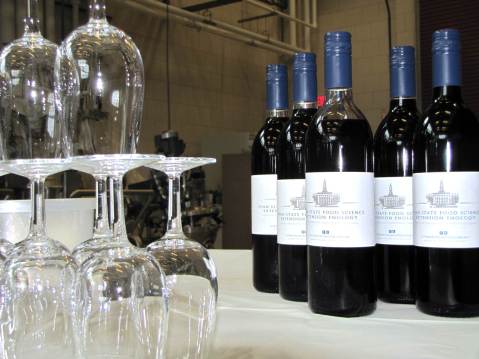Harvesting the Knowledge Accumulated at Penn State on Grapes and Wine
By: Denise M. Gardner
Early in 2016, I was asked to create a “behind the scenes” event in late October to feature our research winemaking program and share this with alumni to introduce them to some of the things that Penn State offers in the fields of viticulture and enology. This was, by far, one of the most interesting events I have organized during my time with Penn State, and it ended up being a very rewarding experience, personally, to see the pride and talent that contributed to make the event a success.
The challenge: teach a group of adults about wine production… most of whom have probably very little knowledge about or experience in actual wine production.
As many of us know, making wine is not really the romantic ideal that is often portrayed and associated with the wine industry. We all know that we aren’t overlooking our vineyards with a glass of wine in hand 24-7.
It’s hard work. It’s dedication. And it’s farming.
When I introduced this event idea to the Extension Enology Advisory Committee – a group composed of 13 volunteers from Pennsylvania’s wine industry and several representatives from various academic communities – they all jumped on the idea of showcasing the Penn State Extension Enology presence and the impact it has had on the local industry in addition to Penn State’s research programs.
Starting in April 2016, I went to work on developing a short [film] script to organize and develop a small video that highlighted our research initiatives and student involvement around winemaking at Penn State. The hope was that this video would feature how students, faculty, and staff are getting involved with industry members via Penn State Extension’s programs while also explaining how wine is generally produced.
With this video, I ended up interviewing two faculty members from our research team, Dr. Michela Centinari from the Dept. of Plant Sciences and Dr. Ryan Elias from the Dept. of Food Science. We collected their perspectives and opinions on various activities that they have been involved in and related it back to the growth and development associated with Penn State offering educational and research experiences in viticulture, enology, and wine marketing.
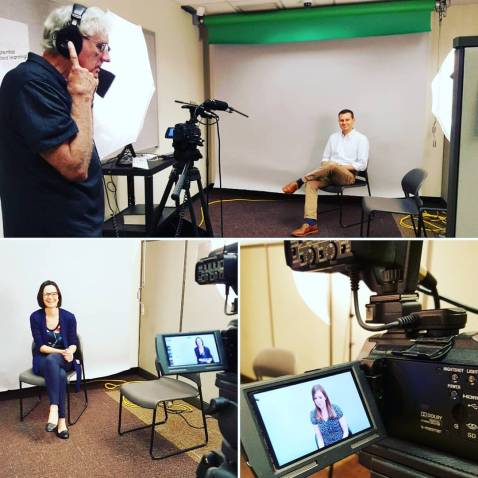
Figure 1: Filming Day! Dr. Ryan Elias, Dr. Michela Centinari, and Denise Gardner get interviewed and video taped for a small presentation on winemaking at Penn State. Filming completed by media guru, Jon Cofer. Photo by: Denise M. Gardner
Luckily, one of the media specialists within the College of Agricultural Sciences, Jon Cofer, had a collection of footage that we had shot during wine processing days just in case we ever needed video footage for anything. As luck would have it, we did need the media footage! Jon sifted through hours of film to find the best footage, which we then tied back into the explanation on how research wines are generally processed at Penn State.
During our travels around the state, whether it was to check in on research trials or visit with industry members during Regional Winery Visits, Michela, a group of dedicated graduate students, and I collected video footage in commercial vineyards in an attempt to highlight what goes on during the growing season. And finally, I met with some recent graduates that experienced educational opportunities through Penn State and Extension, and who both work in Pennsylvania’s wine industry today. I have to admit, one of the most awarding experiences in being Penn State’s Extension Enologist is that I have watched several “students” graduate and find full-time job placement within our state’s wine industry. It is an absolute joy to see these young adults exceed in a growing industry.
The result of this event couldn’t have been better received. Instead of making wine with a group of non-winemakers, we set up three educational stations to teach about:
- wine grape properties and vineyard management by highlighting how to conduct a berry sensory analysis, explaining berry physiological differences, and teaching how to read a refractometer.
- the chemistry behind fermentation and sensory training associated with wine tasting through analytical demonstrations and “aroma guessing” with aroma standards.
- and evaluating the end result (finished wine!) of some of our best research wines and commercial winery collaborators.
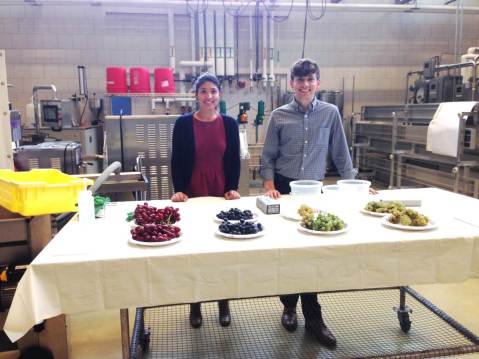
Figure 2: Graduate students, Maria and Drew, get ready to teach attendees about wine grape properties. Maria and Drew are members of Dr. Michela Centinari’s research lab. Photo by: Tom Dimick

Figure 3: Jared Smith (Dept. of Food Science Teaching Lab Support Specialist and previous graduate supported by the Crouch Endowment) explains how winemakers monitor fermentation and the use of temperature-controlled fermentation tanks. Photo by: Tom Dimick
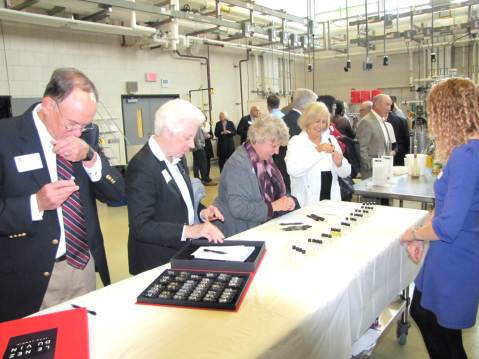
Figure 4: Graduate student, Laurel, tests attendees on their ability to smell and aroma and guess what it is. Laurel works within Dr. Ryan Elias’s lab. Photo by: Tom Dimick
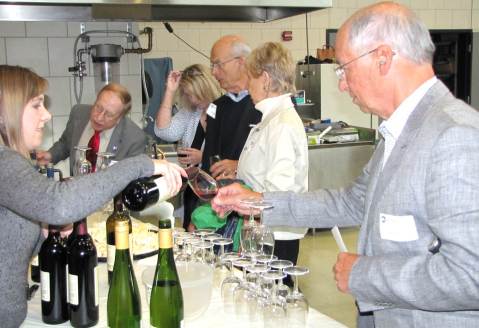
Figure 5: Denise Gardner pours some of the commercial wines for attendees and explains how to pair them with locally produced cheeses. Photo by: Tom Dimick
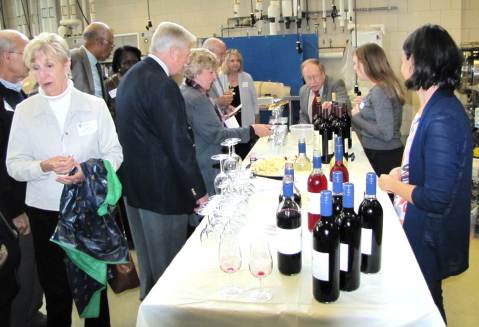
Figure 6: Dr. Michela Centinari pours and explains the research wine trials. Attendees loved this portion of the program and were truly impressed with the quality wines produced by our research team! Photo by: Tom Dimick
The educational portion of this program was a big success. Attendees learned about native and wine grape varieties grown in Pennsylvania, and how those grapes compare to table grapes that people see in grocery stores. At the fermentation booth, participants learned how to measure Brix to determine potential alcohol and how a temperature-controlled stainless steel tank can be useful in wine production. Additionally, our graduate students put guests’ nose-sniffing skills to the greatest test in seeing if they could guess various wine aromas without peaking at the answers! It was enlightening to see our students teach the importance of these skills to develop a career in the wine industry.
The Penn State research wines that are made at University Park were also a big hit. Explaining the purpose of research wines can be a slight challenge, as most of our wines are never finished. This means that in order to emphasize a vineyard or winemaking treatment, fining, stabilizing, and finishing treatments (like oak aging) are kept to an absolute minimum or completely avoided. In many cases, bottled wines will never see any oak or fining other than getting racked off of their lees.
Our primary display was on the Noiret wines, which was a project funded by the PA Wine Marketing and Research Board to determine if vineyard management treatments affected the concentration and perception of rotundone, the primary aroma compound associated with the Noiret variety that exudes a black pepper aroma. The rosé wine, also made from Noiret, was an excellent contrast to the red wines produced from the same variety. Pairing the wines with various cheeses produced by Berkey Creamery was an excellent way to also talk about wine styles produced in Pennsylvania and the importance of food and wine pairing with many of the local wines.
If you are interested in tasting many of our wine trials, please join us at the annual PA Wine Marketing and Research Board Symposium. The 2017 Symposium will be held in University Park on March 29th! (More details on this conference will be released soon!)
But what happened to that video?! If you are still interested in evaluating our winemaking program, curious about what we have been up to for the past few years, please feel free to enjoy our short 12 minute video that highlights a small portion of our efforts to work with industry and participate in viticulture and enology research. While the program is young, we have truly been fortunate to work with some pretty amazing people: commercial growers and producers that are interested in research, students developing expertise, and other academic colleagues that have been willing to collaborate with us as we build our programs.
We truly hope that you have seen or experienced some of the benefits of our programs, but if you would like to know more about what we do, please do not hesitate to contact us! Our email addresses are readily available and we also try to document our regular activities on Facebook. We honestly couldn’t do it without the support of people like YOU!
Enjoy the video! We think it is fairly entertaining, a lot of work went into it, and it showcases a small fraction of the things we are trying to do at Penn State to help progress and educate the local wine industry:
(If you do not have a dropbox account, simply hit “No Thanks” when the pop up window is displayed. You can also do this if you would like to avoid logging into dropbox.)

